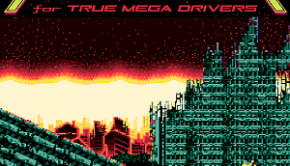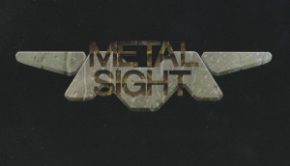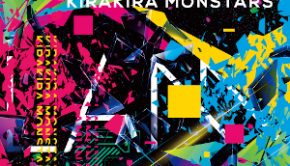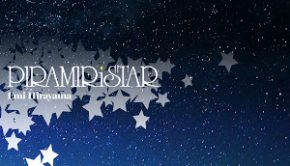Strania -The Stella Machina- The Force Signals
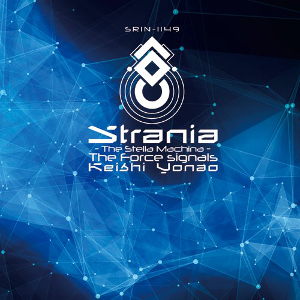 |
Album Title: Strania -The Stella Machina- The Force Signals |
| Record Label: Sweep Record |
|
| Catalog No.: SRIN-1149 |
|
| Release Date: April 4, 2017 |
|
| Purchase: Buy at CD Japan |
Overview
In 2011, the soundtrack to Strania: The Stella Machina, a game developed by G.Rev and composed by Keishi Yonao, was released, featuring music for both the original game and the downloadable content in which you play as the opposing forces. This music was electronic in nature and had a retro flair to it. Earlier this year, Keishi Yonao released, through Supersweep, Strania -The Stella Machina- The Force Signals, an arrange album that updates the original soundfonts to something a bit more modern and adding some additional elements to the pieces, while keeping their overall structure in place, as if for a game soundtrack. It also features some bonus arrangements by the Go Sato Band. How does this version live up to the original?
Body
The first disc contains the Strania side, just like the original, and most, if not all of the tunes, have a longer track length compared to the original release. As with the original release, there are stage themes, each with unique boss themes. “Stage 1” features some edgier synths, incorporates electronic guitar, and benefits from the longer length and solos. “Stage 2” also features a bit of an edgier sound, but the additional strings accompaniment makes for a warmer listen. The music for “Stage 3” features a blend of modern and retro sounds and includes updated synths while “Stage 4” focuses on updated synths and also includes additional strings accompaniment. Things get a bit more intense with “Stage 5”, which has a more industrial sound compared to the original, helping to give it a darker tone compared to the original, which is accentuated by the distorted synth. It’s one of the more changed tunes on the album. “Stage 6” is by far my favorite of the reimagined versions. The sound is much cleaner overall and the light synth accompaniment heard throughout helps give a subdued, yet tense, determined sound to the piece. As the piece progresses, electric guitar is also incorporated to give it more of a rock vibe. Finally, “Last Stage” incorporates choir and strings for a much more dramatic affair compared to the original while also incorporating some heavier electronic elements. “Ending” incorporates smooth synth, strings, FM synth, and some jazzier elements to create a tune that ties together the whole sound of the first disc, however, suffers a bit from sounding muddy at times.
The boss themes on the first disc cover a gamut of tones. “Boss 1” largely follows the structure of the original, sounding less like a boss theme, and more like a heroic space stage themes, but the updated synths really help sell it. “Boss 2” is certainly more intense compared to the original and takes on a more industrial approach in the accompaniment. The third boss theme is an intense mix full of dark tones, jazzy piano, organ, FM synth, and industrial components. The end result is an excellent transformation. “Boss 4” features some updated synths, particularly in the accompaniment, as well as some strings sections, that help elevate it while “Boss 5” is a slow burner in the sense that it progressively gets more intense and also sounds a bit spacier on the whole. Finally, “Boss 6” adds some wobble bass, an industrial tone, strings, and some dubstep influence. The bonus arrangement by the Go Sato Band on this disc is of “Stage 1.” While it is a nice live rendition of the music, adding plenty of percussion, in addition to the blend of synth/electric guitar leads, it doesn’t deviate too much from the original structure, which might be a turn off for some.
The second disc covers the Vower side and is overall darker than the first disc. The first stage theme definitely sees a boost in intensity, combining synth and industrial tones to create an edgy piece while the second stage features a bit more tension compared to the original due to its updated synth in both the lead and accompaniment. “Stage 3” is more dance-like compared to the original but also focuses a bit on a retro touch thanks to the FM bass incorporated into the tune. “Stage 4” is as melodically driven as it was in the original, but the addition of some FM synth in the accompaniment gives it a bit more of a retro flair. There is a small amount of dubstep influence featured in the tune, that while not detracting from the original piece, doesn’t feel like it belongs. The fifth stage theme features a hard techno beat while the synth lead and accompaniment help give it a futuristic vibe. There is also the addition of choral synth that adds a bit of a dramatic flair. The end result is quite enjoyable. “Stage 6” features a lot of glitchy electronic elements with a tense percussive focus, choral chanting, and industrial sounds. The end result is quite intimidating sounding in nature. Finally, “Last Stage” opens with jazzy piano, strings, and synth, making for a nice tribute to the Strania side of the album. Compared to the rest of the second disc, it carries with it a more heroic vibe. The “Ending” blends piano, strings, and synth to give an industrial tone, but one that isn’t overbearing, giving the piece a sense of closure and accompaniment.
The first boss theme is a great reimagination. The mix of slow synth, combined with the dirtier electronic accompaniment and beautiful melody. make for an engaging listen that really works well. “Boss 2” is dark, tense, and gritty, thanks to the FM synth accompaniment, making for a great listen that works well with the synthy melody. Likewise, the third boss theme adds tension by incorporating strings as well as some FM bass that goes well with the synth melody. Tension opens up “Boss 4” with its slow tempo mixed with frenetic synths, giving it a nice dramatic flair while also incorporating strings elements. Unfortunately, “Boss 5” sounds a bit muddy at times, particularly due to the constant accompaniment, which does convey a sense of endless attack, but at the expense of a cleaner sound. Lastly, the sixth boss theme focuses on intense electronic tones with distorted synth emulating the atmosphere of the stage themes. The bonus arrangement by the Go Sato Band on the second disc is that of the fifth stage theme and features electric guitar, jazzy undertones, piano, and synths. The piece is more successful than the other Go Sato treatment.
Summary
For those who have not heard the original soundtrack to Strania -The Stella Machine-, this piece is a suitable substitute. Many of the tunes themselves are modernized a bit, or given new life thanks to additional accompaniments or elements added to the tunes. Keishi Yonao did a good job adapting the music to a more modern soundfont while still retaining the essence of the originals. While the bonus arrangements are nice, they don’t add anything as an essential listen. Recommended for fans of Yonao and the original soundtrack.
Do you agree with the review and score? Let us know in the comments below!
4
Posted on August 11, 2017 by Don Kotowski. Last modified on August 11, 2017.

